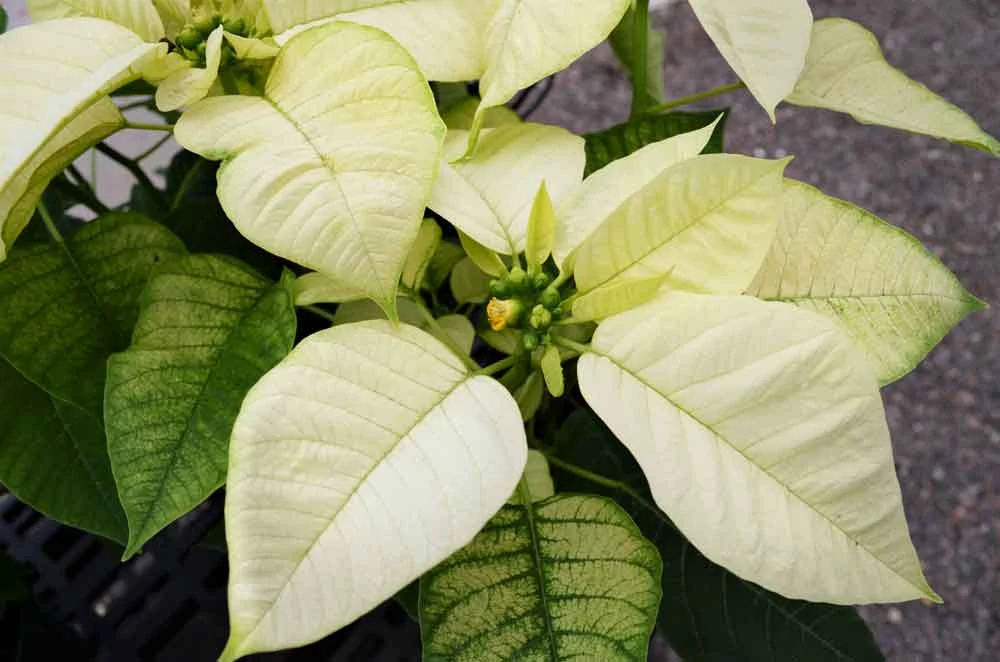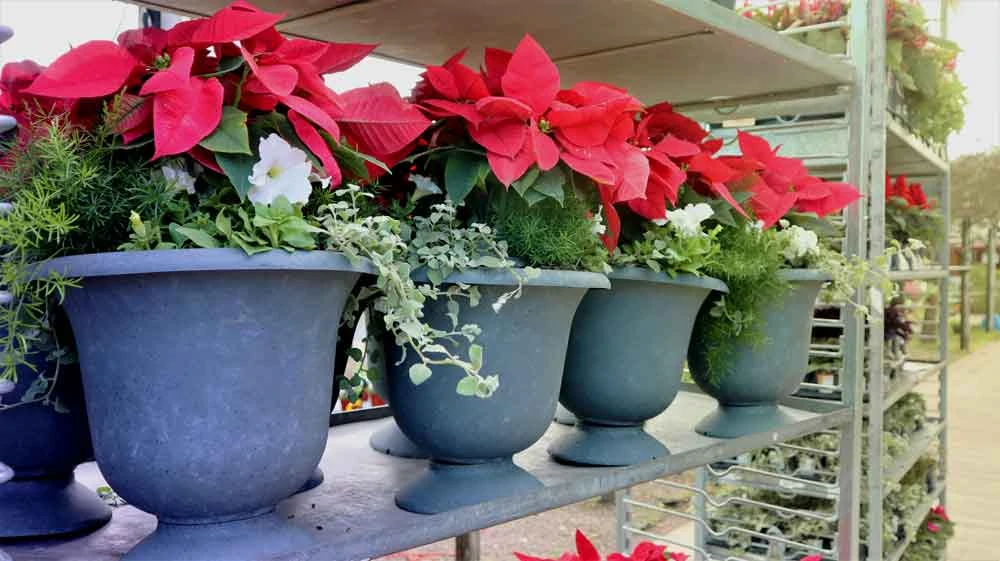by Amanda Rose Newton
Poinsettias are the quintessential Christmas Plant.
On average, poinsettias rake in 250 million dollars for growers annually in the 6 weeks leading up to Christmas alone! Not bad for a seasonal plant!
Worldwide, poinsettias are well-loved, both as a Christmas and an Easter plant in Spain and South America. The name “poinsettia” came about later after physician Joel Roberts Poinsett brought the plant back stateside from a trip down south in 1828.
Despite their seasonal appeal, they are rarely showcased once the Christmas lights have come down and the last Christmas cookie has been consumed. Native to Mexico, poinsettias are a tropical plant, meaning with the right care they can last long after the holiday season has come and gone.
Poinsettias: Color Science
Today, there are over 100 colorful varieties of poinsettias to choose from. Everything from red and white peppermint candy-like swirls to lemon yellow or salmon pink can add a touch of whimsy to your holiday décor.

Red still reigns supreme, making up about 60% of all poinsettia sales worldwide. The beautiful color so coveted by poinsettia enthusiasts is attributed to the leaves, with the true flowers being the small yellow-white blooms in the center.
Light plays an essential role in getting the most dynamic coloration, with long periods of darkness needed to achieve the desired hue. This process is known as photoperiodism, and in the case of the poinsettia, flower formation is triggered by this cycle of dark and light.
During the day, they absorb light to provide enough energy to transform the green leaves (bracts) into bright red foliage white producing the snowy interior blooms overnight. As with all plants in the Euphorbia genus, they produce a milky sap and are mildly toxic to pets. Despite popular belief, poinsettias are NOT toxic to people!
Poinsettia Care
Your poinsettia can happily live indoors for several months. Generally, they will retain most of their color until early March, pending they are not exposed to drafts or cool temperatures.
The most common reason indoor poinsettias are not successful is overwatering. Make sure the soil is dry to the touch before attempting to add water.
If the soil gets too moist, this invites in fungi and can drastically shorten its lifespan. Misting, just like you would an orchid, is a great option to help make sure it receives the humidity needed to retain color longer. Avoid using fertilizer while they are indoors, as this often will cause additional stress to the plant.
Poinsettias in the Landscape

While not often considered, poinsettias can be right at home in the Florida landscape. Believe it or not, if left to their own devices, poinsettias are more like shrubs than mere flowers and can reach staggering heights of 10 feet tall in the topics!
While they will potentially not retain most of their color, they still offer visual interest and add nice, full foliage to balance out your own plantings. If your poinsettia is still hanging on come March, you can transplant it outdoors with ease.
First, prune back the fading leaves (bracts) and pick a spot that receives full sun. Well-drained soil is a must and adding compost or liquid seaweed will be a welcome treat.
Over the summer, be sure to pinch back your blooms several times to promote a full look come the holiday season. If cold weather is on the radar, remember to protect and cover your poinsettias to protect from damage.
Getting Your Poinsettia to Rebloom
If you decided to plant your poinsettias in the landscape, be sure to avoid having artificial light sources shine directly on them during the evening hours in the months leading up to the holidays.
Remember, they need that long period of darkness (12 hours) in order to achieve the best in show coloration. It can also cause a delay in the yellow-white flowers, which are key to offset the brilliance of the leaves (bracts).
For indoor plants, you can mimic their photoperiodism cycle by placing your poinsettia in bright light during the day to store energy for creating beautiful color. At night, move your plant to a dark closet, cabinet, or simply cover with a cardboard box for 12-hour intervals.
Repeating this cycle every day during the fall will encourage the coloration you desire. To coax a bloom out of poinsettia, make sure that you are pruning it (or pinching back buds) starting in the spring.
This is to be done whether keeping them indoors or out! Generally, 6 inches from the top of a container or an indoor plant is enough. It is also wise to cut back on their watering during the light cycle process.
Treat yourself to a plant that will last long after the holidays have come and gone. Start a new family tradition of planting poinsettias in the garden and you will have the best “natural” Christmas decorations on the block!


